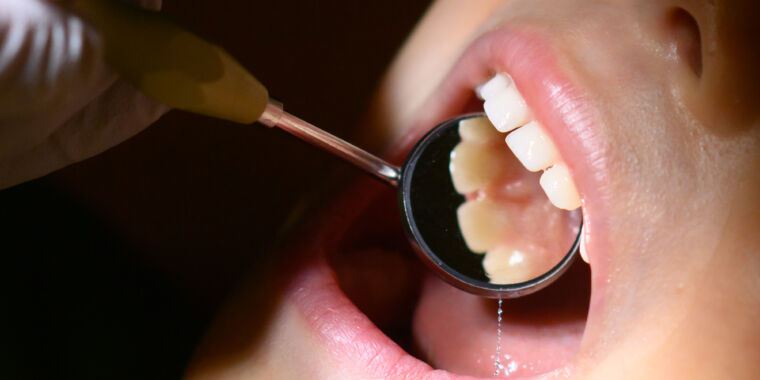“No agony, no gain” is a usually applied expression when it will come to getting in form. It could also be why numerous of us imagine that you have to have to come to feel sore immediately after a exercise to know that you have performed sufficient.
There are numerous causes why your muscle tissue could possibly get sore soon after a exercise session. But, opposite to well-known belief, you really don’t necessarily have to have to come to feel sore in the hours or days immediately after training to know you’ve experienced a superior exercise session.
Delayed onset muscle soreness is the scientific time period to describe the sore and tender experience our muscles have after a exercise session. Ordinarily, it comes about soon after we have performed significantly strenuous training, or if we do exercise we are not employed to. It can come about just after any style of work out, nevertheless it is much more widespread soon after eccentric physical exercise. These are actions exactly where the muscle tissues resist a load as they are stretched (these types of as when you’re working downhill or descending stairs). The scaled-down upper-limb muscle groups (these kinds of as your biceps and shoulders) can be extra susceptible to DOMS as they could not be accustomed to eccentric exercise.
Whilst DOMS can materialize even hours just after a exercise routine, it generally peaks about two times later, based on the depth and quantity of physical exercise. But though DOMS is prevalent, the cause it happens stays poorly recognized – though scientists do have a number of theories about what’s heading on.
The recent scientific principle is that DOMS is linked to a mixture of:
- Mechanical injury (to the protein composition of the muscle mass fibre),
- Destruction to the membrane encasing the muscle fibre,
- Destruction to the connective tissue encompassing the muscle mass fibres,
- The body’s inflammatory reaction, resulting in more muscle protein breakdown and stimulating sure nerves, creating agony.
A selected diploma of workout-induced muscle harm is almost certainly vital to enable develop much larger, more robust muscle groups. In actuality, even though muscle mass harm from work out may possibly decrease how effectively muscles operate following a exercise session (in some cases even for up to two weeks), you are significantly less probably to encounter DOMS to the exact degree the upcoming time you physical exercise. This may also reveal why people today who work out on a regular basis don’t knowledge DOMS as typically.
Standard fat instruction, concentrating on eccentric exercise routines (these kinds of as squats, deadlifts and bench presses) have also been revealed to lessen the damaging influence of exercise on the muscle mass after ten education sessions. There are likely a amount of motives for this, but it mostly has to do with the muscle turning into much better at preserving against hurt.
How normally and how severe a particular person activities DOMS varies from human being to human being. Having said that, older men and women may possibly be extra susceptible to equally training-induced muscle destruction and DOMS, probably because of to their muscle tissue staying much less equipped to recuperate soon after arduous exercise. Investigation has also proven that folks with a specific genetic make-up are much better equipped to get well from eccentric physical exercise than other people today who did the specific exact workout.
If you are beginning out a new workout programme and your very first exercise session is particularly rigorous or long-long lasting, it’s really tough to prevent DOMS. Adding a lot more eccentric routines into your coaching programme may possibly also lead to DOMS. But once more, staying sore doesn’t automatically imply you have had a far more efficient session – it just means you are carrying out something your muscles aren’t used to.
So if you frequently exercise and come across you are not emotion as sore later on in the working day or even in the times following your exercise, rest confident that your exercise session is still doing work – your muscular tissues have just gotten improved at working with the problems and recovering from it.
If you want to get fitter and much better, in its place of feeling like you have to have to workout until eventually you’re sore, concentrate as a substitute on a principle known as “progressive overload”. This is the place you slowly increase how considerably work out you do every time – these kinds of as executing further reps on an training, or introducing supplemental fat. Not only is progressive overload demonstrated to be an successful way to establish muscle and power, it may also reduce how normally you working experience DOMS. Scientific tests display even a couple of weeks of on a regular basis utilizing progressive overload for the duration of routines is ample to see this result.
So as an alternative of measuring how powerful your exercise routine has been dependent on how sore you are, try out instead to steadily enhance possibly the range of reps you do every 7 days, or the amount of money of weight you raise. These incremental gains in physical fitness and power will demonstrate you just how successful your prior routines have been.
This article was to start with posted on The Dialogue.
David R Clark, Senior Lecturer, Toughness and Conditioning, Liverpool John Moores College
Carl Langan-Evans, Postdoctoral Research Fellow, Energy and Conditioning, Liverpool John Moores University
Rob Erskine, Affiliate Professor in Neuromuscular Physiology, Liverpool John Moores University





More Stories
Strong link between cardio fitness and long-term health
How to educate your brain to take pleasure in training, in accordance to science
7 Fitness Hacks to Sneak in Exercise Painlessly Every Day